On the Mount of Olives there is today a relatively modern church known as the “Church of All Nations.” Alongside of it is a small grove of very old olive trees.
Olive trees can live more than 1,000 years. It seems unlikely that any of these trees were living at the time of Christ, but there is some small possibility that they were, which would be quite remarkable. The area of the trees is referred to as “The” Garden of Gethsemane, as in the very one. No one really knows the exact spot. In ancient times the entire mount was covered with olive tress, hence the name of the Mount. There may have been multiple olive press gardens. We do not know. Right now we have no archaeological evidence for any potential site. But of course that is not the main point; it is the Words of Christ, not the soil on which they were spoken, that matter to us. Just as the Temple itself and the Holy of Holies has been displaced and replaced by God’s Spirit residing in His Redeemed, so we do not attribute some great significance to one fixed plot of earth over another. Below are closeup pictures of that olive grove adjoining the Church. The grove is fenced off to prevent damage and souvenir grabbing.
Below are closeup pictures of that olive grove adjoining the Church. The grove is fenced off to prevent damage and souvenir grabbing.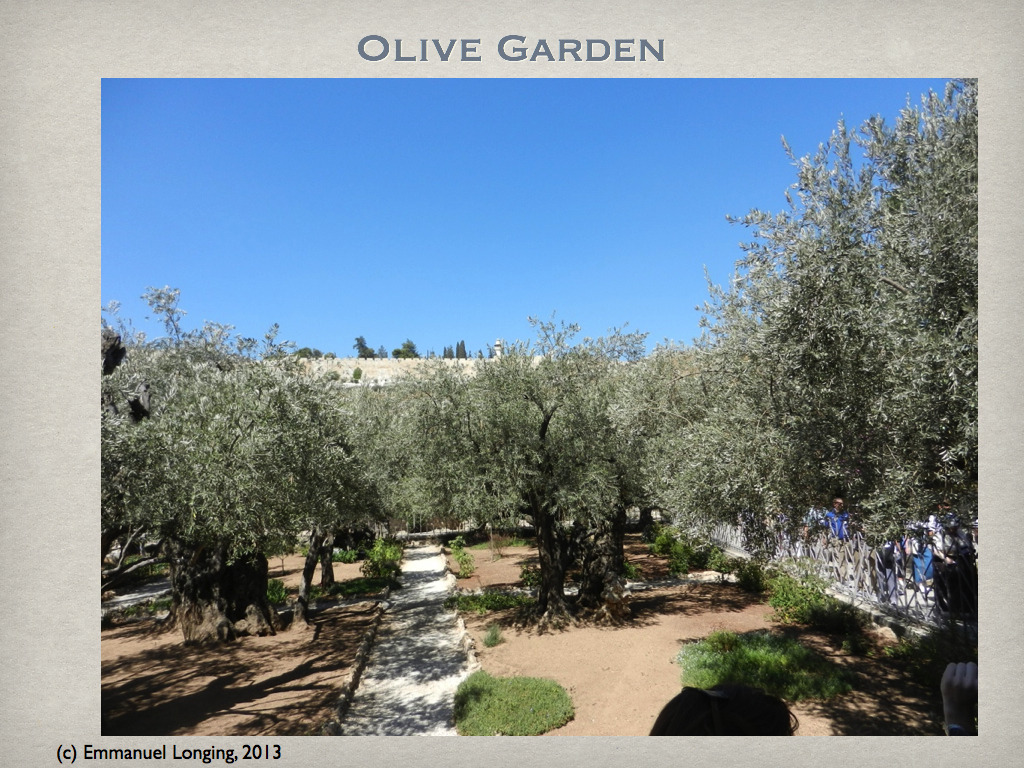 As the olive tree ages it gets wider at the trunk rather than growing tall. So the oldest trees are very squat looking. The leaves have a distinctive bluish even silvery green color.
As the olive tree ages it gets wider at the trunk rather than growing tall. So the oldest trees are very squat looking. The leaves have a distinctive bluish even silvery green color. The wear and tear of aging while supporting limbs of olives endangers the tree. Supports are often made for any of the branches that are straining the main trunk. Below the support is a column of small stones.
The wear and tear of aging while supporting limbs of olives endangers the tree. Supports are often made for any of the branches that are straining the main trunk. Below the support is a column of small stones.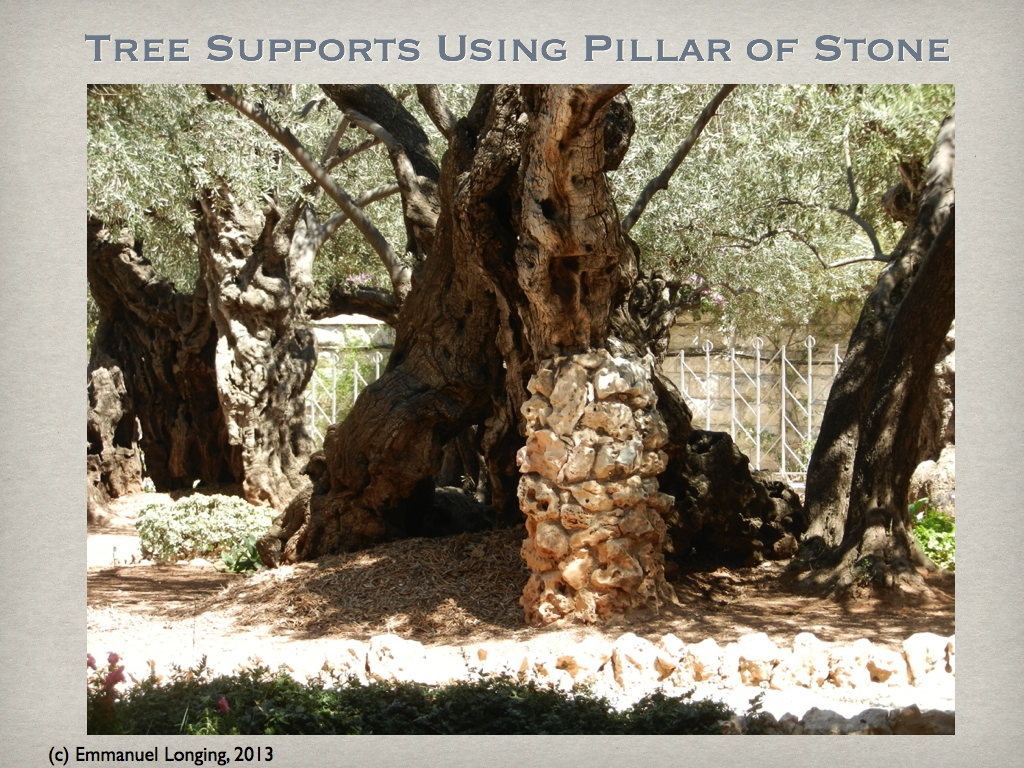 The apparently oldest olive tree in this rare and old grove is shown below. It’s diameter is huge, perhaps 10 feet.
The apparently oldest olive tree in this rare and old grove is shown below. It’s diameter is huge, perhaps 10 feet. 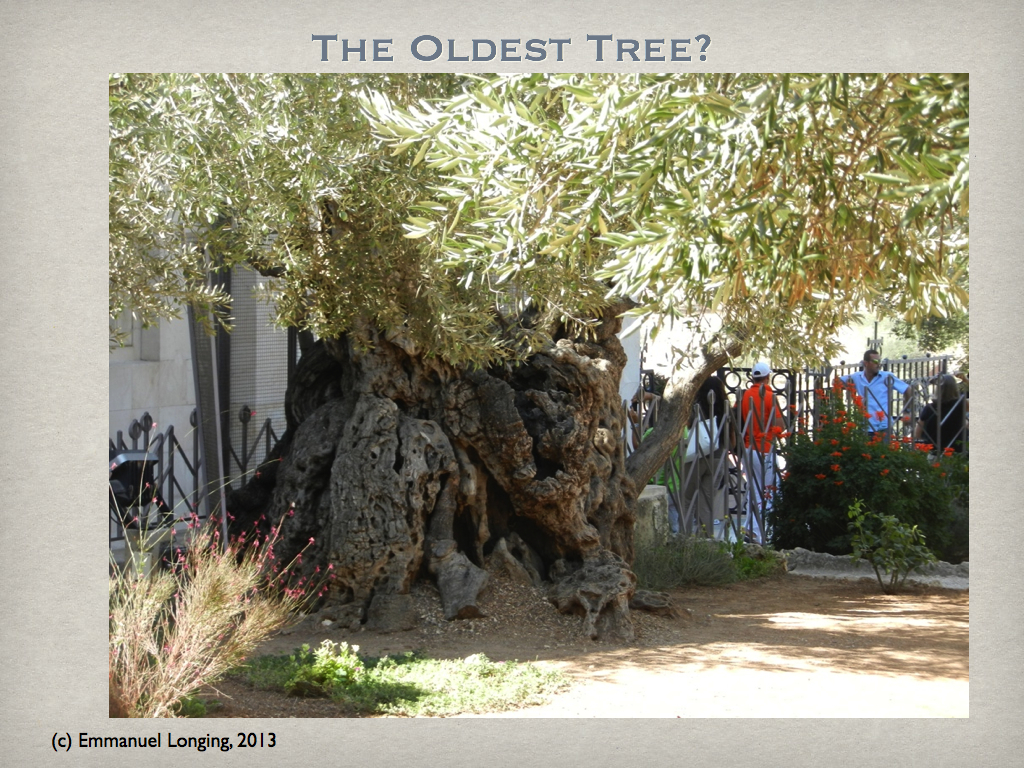 An ancient olive pressing ‘factory’ (a gethsemane) was a recent archaeological discovery at a site not far from Jerusalem (at Yodfat, in modern Israel). The archeological dating on the findings at the site is the 1st Century AD, so it is contemporary to the time of Christ. Shown below are large stones that were used to mass produce olive oil. The stones labelled “A” were originally upright and used to form the cavity in which the press operated. The “B” stones were hung at the end of a large wooden beam (which, as wood does, has decayed away) that provided the pressure to squeeze the oil out of the olives.
An ancient olive pressing ‘factory’ (a gethsemane) was a recent archaeological discovery at a site not far from Jerusalem (at Yodfat, in modern Israel). The archeological dating on the findings at the site is the 1st Century AD, so it is contemporary to the time of Christ. Shown below are large stones that were used to mass produce olive oil. The stones labelled “A” were originally upright and used to form the cavity in which the press operated. The “B” stones were hung at the end of a large wooden beam (which, as wood does, has decayed away) that provided the pressure to squeeze the oil out of the olives.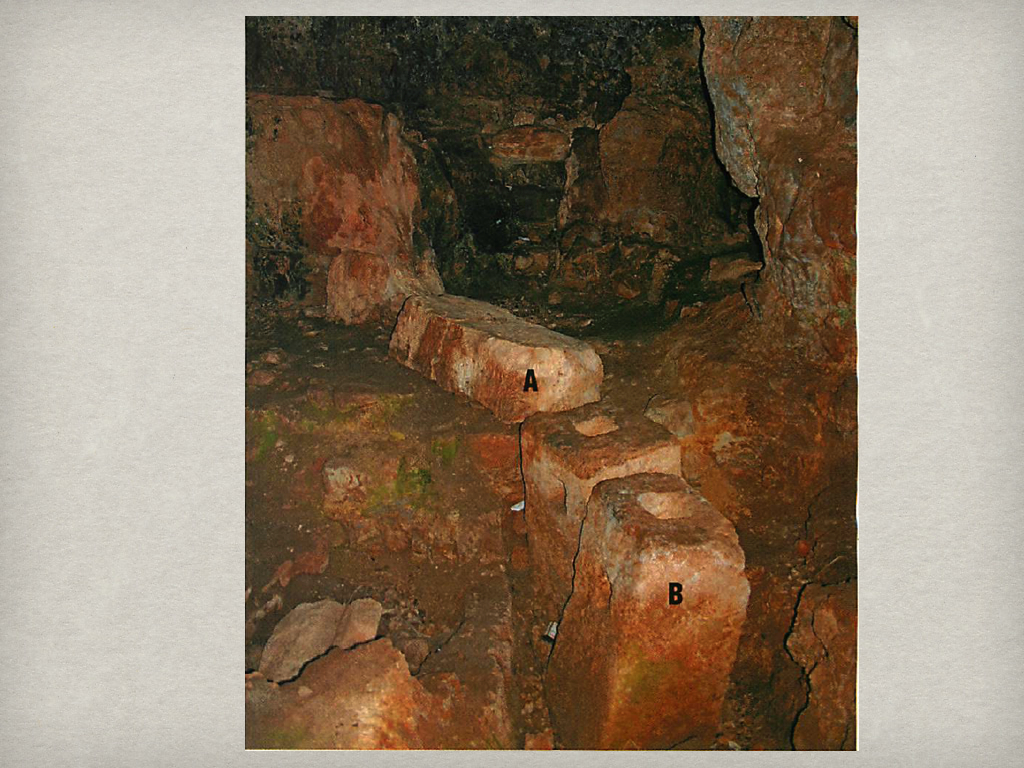 In the schematic below one can see how the stones were used. The olives were gathered in large, flexible baskets (shown in cross hatch below). They were then stacked above a small opening beneath which was an oil collection jar. Then the beam with the “B” stones would be placed over the column of olive baskets. While the olives were been crushed, the workers would begin gathering the next batch of olives so that when the first batch was drained of its oil, the baskets could be rapidly changed out with baskets containing fresh olives.
In the schematic below one can see how the stones were used. The olives were gathered in large, flexible baskets (shown in cross hatch below). They were then stacked above a small opening beneath which was an oil collection jar. Then the beam with the “B” stones would be placed over the column of olive baskets. While the olives were been crushed, the workers would begin gathering the next batch of olives so that when the first batch was drained of its oil, the baskets could be rapidly changed out with baskets containing fresh olives.
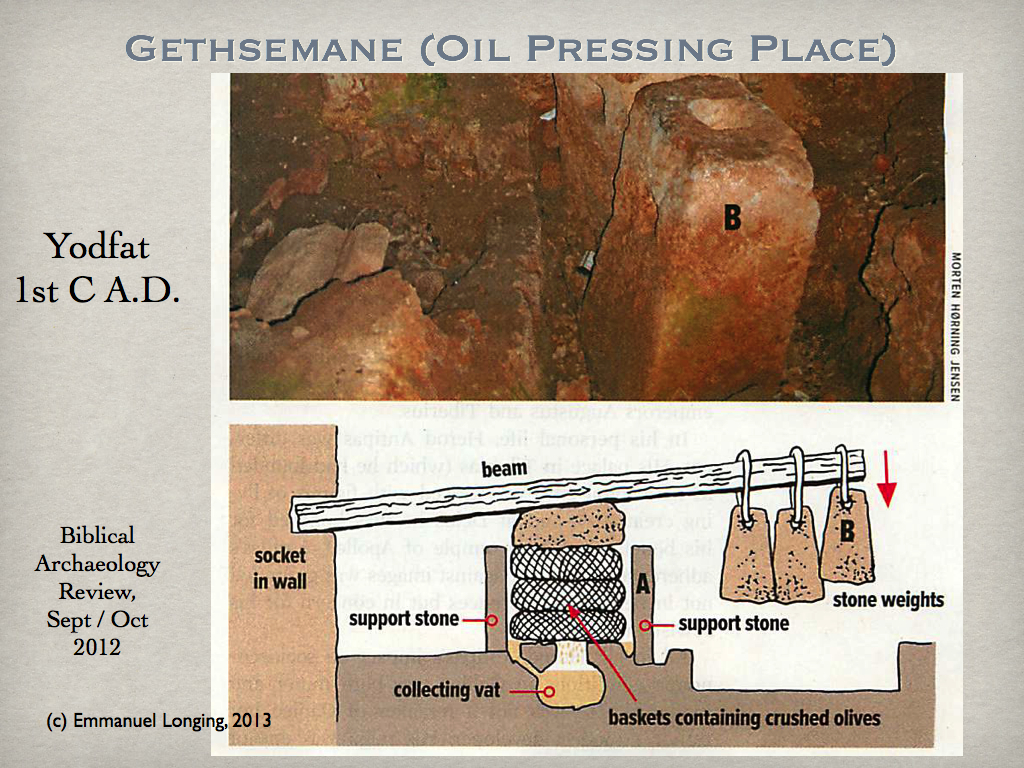 We have to remember that at the time of Christ, and for some 18 centuries thereafter, there was no kerosene, natural gas, or electricity to provide illumination for lamps. When darkness fell, it was the precious oil from the olive that gave light. Such oil, and light, was a type of the Holy Spirit: “Thy word is a lamp unto my feet, and a light unto my path.” (Psalm 119:105, KJV).
We have to remember that at the time of Christ, and for some 18 centuries thereafter, there was no kerosene, natural gas, or electricity to provide illumination for lamps. When darkness fell, it was the precious oil from the olive that gave light. Such oil, and light, was a type of the Holy Spirit: “Thy word is a lamp unto my feet, and a light unto my path.” (Psalm 119:105, KJV).
Let us return to our story on that final night on the Mount of Olives.